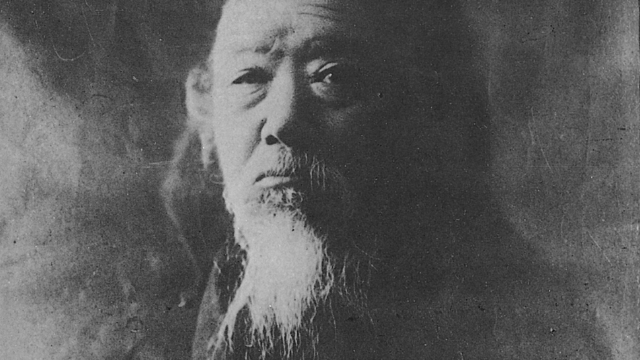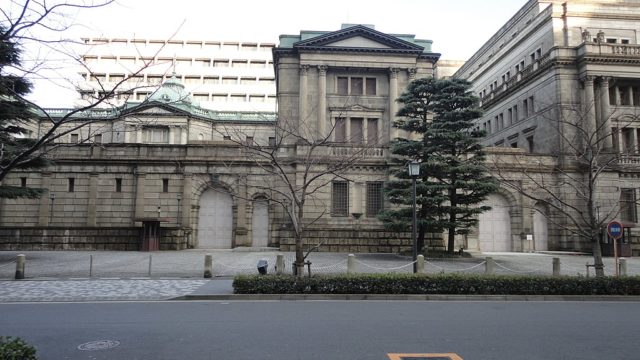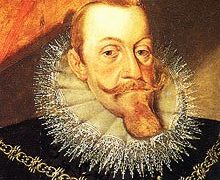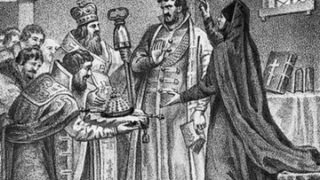動乱時代 (大動乱、スムータ、ロシア語: Смутное время, Smutnoye vremya)は、ロシアの歴史で、1598年のリューリク朝フョードル1世の死去から1613年のロマノフ朝創設までの時代を指す。
動乱時代 (大動乱、スムータ、ロシア語: Смутное время, Smutnoye vremya)は、ロシアの歴史で、1598年のリューリク朝フョードル1世の死去から1613年のロマノフ朝創設までの時代を指す。1601年から1603年にかけて、ロシアは、当時の人口の3分の1に相当する200万人が死ぬというロシア大飢饉(英語版)に見舞われた。また、1610年から1613年にかけてはツァーリ不在の空位時期に陥った。さらに1605年から1618年にかけてのロシア・ポーランド戦争で、ロシアはポーランド・リトアニア共和国に占領され、民衆の蜂起が起こり、皇位簒奪者、皇位僭称者が次々現れた。
https://en.wikipedia.org/wiki/Russian_famine_of_1601–03

Great Famine in Moscow in 1601。
The Russian famine of 1601–1603, Russia’s worst famine in terms of proportional effect on the population, killed perhaps two million people: about 30% of the Russian people. The famine compounded the Time of Troubles (1598-1613), when the Tsardom of Russia was unsettled politically and later invaded (1605-1618) by the Polish–Lithuanian Commonwealth. The many deaths contributed to social disruption and helped bring about the downfall of Tsar Boris Godunov (r. 1598–1605), who had been elected tsar in 1598. The famine resulted from a series of worldwide record cold winters and crop disruption, which geologists in 2008 linked to the 1600 volcanic eruption of Huaynaputina in Peru.
https://en.wikipedia.org/wiki/Huaynaputina
Causes: A 2008 study by Kenneth L. Verosub and Jake Lippman documents worldwide famine after the eruption of a volcano in Peru in 1600. Huaynaputina ejected 16 to 32 million metric tons of particulates into the atmosphere, notably sulfur dioxide, forming sulfuric acid and creating a volcanic winter; this reduced the amount of sunlight reaching the Earth’s surface (see Albedo), which scientists believe contributed to bitterly cold winters, loss of crops and animals, and massive famine around the world. As a result, people killed many animals with their bare hands to preserve their furs for warmth. The famine was documented across the world: “Records from Switzerland, Latvia and Estonia record exceptionally cold winters in 1600–1602; in France, the 1601 wine harvest was late, and wine production collapsed in Germany and Colonial Peru. In China, peach trees bloomed late, and Lake Suwa in Japan had one of its earliest freezing dates in 500 years.”
(補註: 諏訪湖が完全に凍って氷の盛りあがる音がする日の日付け記録をいう。 500年間以上にわたってきちんと記録されている貴重な観測資料となっている。)
Number of dead: During this two-and-a-half-year period, 127,000 bodies were buried in mass graves in Moscow alone. Widespread starvation killed perhaps two million in Russia, a third of the population.[citation needed] The suffering and social disruption were part of the political unrest called the Time of Troubles, which led to the downfall of Tsar Boris Godunov. Having previously acted as regent for Tsar Feodor, Godunov had been elected to succeed him during an interregnum.
**
Huaynaputina (/waɪnəpʊˈtiːnə/ WY-nə-puu-TEE-nə; Spanish: [wajnapuˈtina])
*****
*********************************








